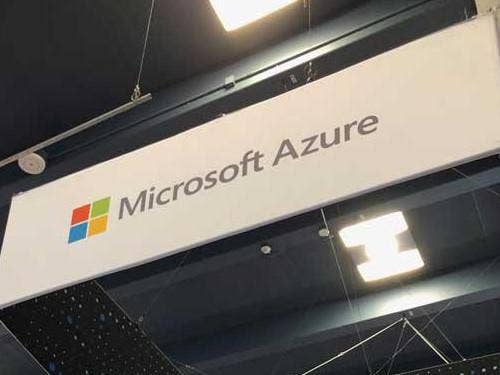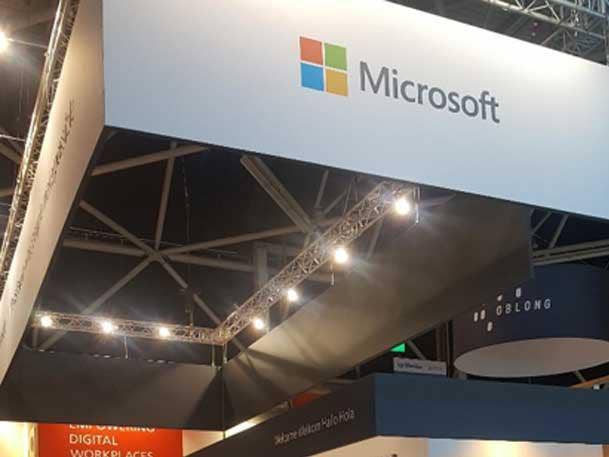Microsoft Earnings Takeaways: Cloud, Generative AI, The Path To E7
Analyst reports point to the potential for Azure deceleration slowing, an end to customers optimizing cloud spend and the sales potential of generative AI.

Microsoft CEO Satya Nadella
Better-than-expected results from Microsoft’s latest earnings—not to mention those of cloud rivals Google and Amazon Web Services—led to a mix of analyst reports hopeful for Azure deceleration slowing, an end to customers optimizing cloud spend and the sales potential of generative AI.
One analyst report even speculated on a price increase to Microsoft productivity applications once the Redmond, Wash.-based vendor allows more access to Copilot. Microsoft could even roll out an E7 license type going beyond the $38-per-user-a-month E5 license, according to Credit Suisse.
“We believe MSFT [MIcrosoft] will seek to monetize the addition of basic M365 Copilot and other GPT functionality first through a broad-based price increase to reflect the value of these productivity enhancements, then creating a new E7 bundle, to reflect the addition of basic AI/GPT functionality into the Office suite,” according to a report from the investment firm.
[RELATED: Google’s Big Earnings Takeaways: AI, Google Cloud Profit, Hiring]
Microsoft Third-Quarter 2023 Results
Microsoft reported results Tuesday for its third fiscal quarter. The quarter ended March 31.
On the earnings call Tuesday, Microsoft Chairman and CEO Satya Nadella was more upbeat than when he discussed new business slowdown on the January earnings call. That slowdown and an announced mass layoff of 10,000 Microsoft employees spoke to an overall trend in IT of businesses spending less on digital tools since the height of the COVID-19 pandemic.
“We do have new workloads starting,” Nadella said on the call. “Because if you think about it, during the pandemic, it was all about new workloads and scaling workloads. But pre-pandemic there was a balance between optimizations and new workloads. So what we’re seeing now is the new workloads start in addition to highly intense optimization.”
According to a Morgan Stanley report Wednesday, Microsoft’s better-than-expected results included:
*Azure growth of 31 percent year over year compared with Wall Street expectation of about 29 percent
*Expected Azure growth for this quarter between 26 percent and 27 percent year over year, more than Wall Street’s expected 24 percent year over year
*Total revenue for the quarter of $52.9 billion beat Wall Street expectations by about $2 billion, or 3.6 percent
Here’s what else you need to know from Microsoft’s third-fiscal-quarter earnings.

Microsoft CFO Amy Hood
The Path To E7?
Credit Suisse reported Wednesday that the 18 percent growth in Office 365 revenue ignoring foreign exchange fit with the firm’s research, which showed “virtually no customers switching off O365 as a result of price increases on ‘as-is’ renewals.”
On the earnings call, Microsoft CFO Amy Hood said that strong renewals and E5 license purchases helped the growth.
With that level of stickiness, Credit Suisse analysts believe Microsoft is working toward an E7 bundle “to reflect the addition of basic AI/GPT functionality into the Office suite.”
But first, Microsoft “will seek to monetize the addition of basic M365 Copilot and other GPT functionality first through a broad-based price increase to reflect the value of these productivity enhancements,” according to Credit Suisse.

Azure Deceleration Slowing
Microsoft had plenty of positives to report, including 31 percent growth in Azure ignoring foreign exchange rates. That number beat the 27 percent expected by Wall Street, according to a Wednesday report from Wedbush.
“Nadella & Co. delivered another masterpiece cloud quarter which will be the focus of the Street and sets a positive tone along with tech brethren Alphabet for the broader tech sector,” according to the Wedbush report. Microsoft “is gaining more market share on the cloud front with many enterprises making this transformational shift on the shoulders of Microsoft.”
Looking ahead, Microsoft’s expected second-calendar-quarter Azure growth of about 27 percent year over year ignoring foreign exchange is in line with Wall Street expectations, according to a Friday KeyBanc report. This would mark a 4-point deceleration from the prior quarter, but less than the7-point deceleration from the end of 2022 to the start of 2023.
KeyBanc estimates Azure growth “troughing” at 24 percent in the December 2023 quarter and improving into the next year.
KeyBanc analysts said in the report, “While we have remained cautious given pervasive commentary around cloud optimization and ‘finops’”—financial operations—“we recall that several of our large channel checks expected stabilization of Azure growth over the next several quarters.”
Microsoft indicated that customers will continue to optimize their existing cloud spend this quarter, but the trend shouldn’t get worse, according to KeyBanc.
A Wednesday report from Morgan Stanley said that Microsoft projects “a flattening of the recent Azure deceleration” and predicted that “we have likely passed the halfway point in Cloud optimizations” that Nadella discussed in the January earnings call.
“What we’re seeing now is the new workloads start in addition to highly intense optimization,” Nadella said on the April earnings call.
Microsoft’s Hood said that “at some point, workloads just can’t be optimized much further.”

Overall Cloud Deceleration
A Bank of America report Friday said that first-calendar-quarter public cloud sales—Google Cloud plus Microsoft Azure plus AWS—beat Wall Street expectations and were up more than 20 percent year over year.
Without cloud sales, the hyperscalers saw more than 5 percent growth in sales year over year.
However, that marked a continued deceleration in cloud growth for the three giants, according to a Friday KeyBanc report.
Last quarter, they reported 26 percent year-over-year growth. In the second calendar quarter of 2022, they reported 36 percent growth.
Each of the individual hyperscaler first-calendar-quarter results met or beat Wall Street expectations “amid increased macro headwinds and exceeded what we believe were more negative investor fears,” according to KeyBanc.
AWS’ 16 percent growth year over year beat the expected 15 percent. Microsoft’s 31 percent Azure growth beat the 30 percent expectation. And Google Cloud’s 28 percent growth year over year met expectations, according to KeyBanc.
However, cloud growth decelerated another quarter due to “cloud spend optimization and slowing cloud migrations.”
“Amazon, Google, and Microsoft all remarked that they saw customers optimizing spend as a result of a weakening macro environment,” according to the report.
Amazon said cost optimization should continue this quarter and AWS growth in April decelerated by 500 basis points from the prior quarter. That implies that AWS grew 11 percent year over year compared with the Wall Street expectation of 12 percent, according to KeyBanc.
AWS executives also said on their earnings call that customers are seeking cost optimization—not cutting costs—to move resources to customer experiences. Cloud migrations of workloads to AWS are strong, according to the KeyBanc report.
“We view 1Q cloud results overall as better than feared, although we are incrementally concerned by the degree of AWS’s continued deceleration (at least 5 points based on April) given its already lower level growth (granted at larger scale) vs. Azure,” according to KeyBanc.
Google executives, meanwhile, said that customer cloud cost optimization resulted in slower consumption growth, although the Google Cloud business saw its first quarter of operating profit thanks to “the timing of equity refreshes,” according to KeyBanc.

AI Already Bringing In Money
A Bank of America report Friday put some numbers to the overall investment in AI, with the U.S. hyperscalers mentioning AI on first-calendar-quarter earnings calls 169 times, up 40 percent quarter over quarter and more than quintupling year over year.
Morgan Stanley’s Wednesday report noted that generative AI—including Azure OpenAI Services and GitHub Copilot—are bringing in sales already.
“The company ascribed 1% point of Azure growth to these AI services, which equates to a $400 [million]-$500 million annualized run rate,” according to the report. “Additionally, the company spoke to early success in attracting customers to build on top of Azure OpenAI Services, surpassing 2,500 customers, a 10X increase QoQ (quarter over quarter).”
Partnerships will play an important role in generating revenue from this form of AI, Morgan Stanley noted. “A strong ability to monetize Generative AI foundational technologies and emerging ecosystems building around Microsoft’s models could prove to be more durable advantages over time.”
In a Wednesday report from Credit Suisse, the firm noted that 10,000-plus organizations have signed up for the Copilot generative AI tool.

Ripple Effects In Software, Hardware
Cloud growth stabilizing later this year and in 2024 should have a ripple effect for other vendors, according to KeyBanc. This includes:
*Infrastructure-as-a-Service providers such as Oracle and DigitalOcean
*Cloud observability vendors such as Datadog, Splunk and New Relic
*Cloud data vendors including MongoDB and Confluent
*Cloud development operations (DevOps) vendors including GitLab, JFrog and HashiCorp
“Those with more of an incumbent, on-prem enterprise customer base like SPLK (Splunk) could be relatively less impacted,” according to KeyBanc. “Similarly we note that we view MSFT (Microsoft) and ORCL’s (Oracle’s) businesses as ‘hedged’ against cloud slowing given their substantial on-prem/hybrid businesses.”
In a Wednesday Credit Suisse report on the overall IT hardware industry, the firm noted that Microsoft’s “PC demand was better than expected, specifically for Commercial devices” and could mean positive news for Dell.
“We currently estimate Dell’s Commercial PC revenue down 25% for the quarter ended April, close to the 28% decline in Windows OEM revenue in the March quarter,” according to Credit Suisse.
Microsoft’s 2,500-plus Azure OpenAI customers highlights “growing awareness and implementation of AI in enterprise environments,” according to Credit Suisse. This bodes well for IBM and Hewlett Packard Enterprise (HPE).
“We think the storage companies will also benefit from data creation longer-term,” according to Credit Suisse.
Microsoft’s guidance for low- to mid-20 percent revenue decline for Windows OEM for the June quarter actually implies “a slightly better decline for the whole PC market as Microsoft only benefits from sell-in, not sell-through,” according to Credit Suisse.
Monthly active Windows devices hit a record high, and usage was above pre-pandemic levels, according to Credit Suisse.